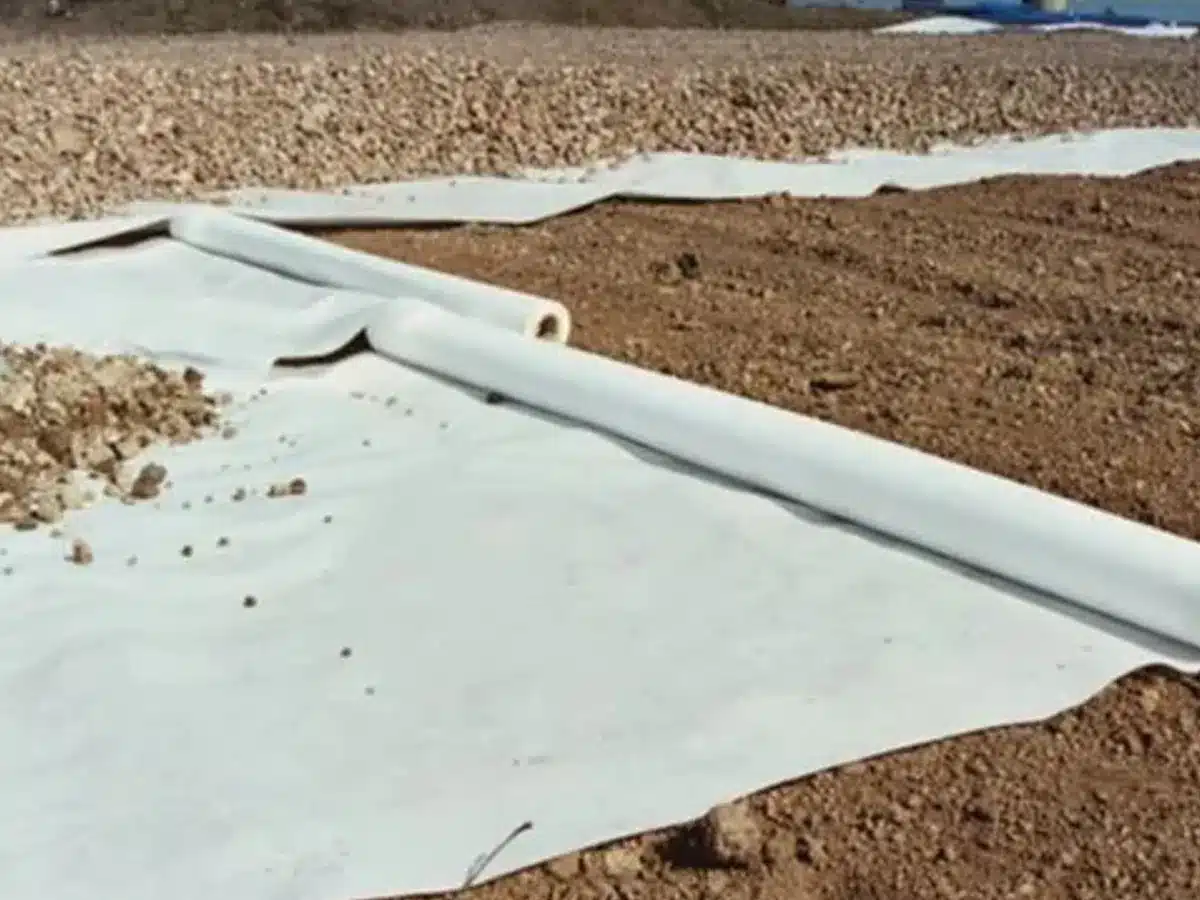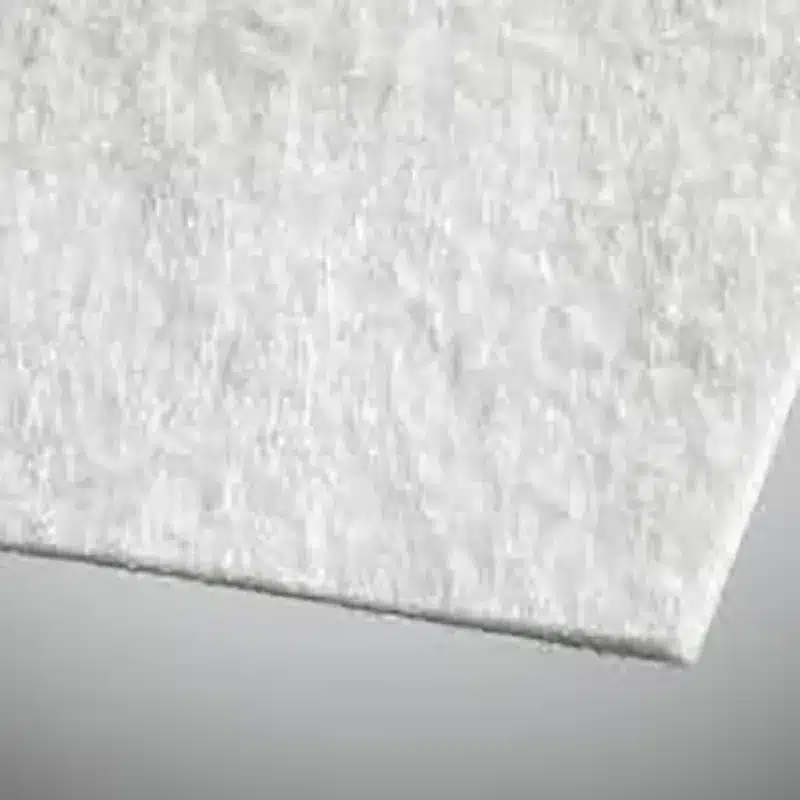+86-159 9860 6917
info@geofantex.com
geofantex@gmail.com
+86-400-8266163-44899
Weed barriers have become a popular solution for homeowners looking to maintain pristine gravel driveways without the constant hassle of weed control. Not only do these barriers prevent unwanted growth, but they also ensure that the aesthetic appeal of your driveway remains intact. This guide will delve into the essentials of selecting and installing a weed barrier for your gravel driveway, offering practical insights and tips to keep your driveway looking its best.

What is a Weed Barrier, and How Does It Work?
What is a Weed Barrier?
- Material: Weed barriers are typically made from woven or non-woven synthetic fibers, although biodegradable options made from organic materials like jute or paper are also available.
- Forms: They come in rolls or sheets that can be cut to fit the specific area where weed control is needed.
Types:
- Woven: Made from polypropylene or polyester, these barriers are durable and allow water and nutrients to pass through while blocking weeds.
- Non-woven: These are more like a solid sheet, usually better at blocking weeds but may not allow as much water or air to pass through.
- Biodegradable: Made from organic materials, these barriers decompose over time and are environmentally friendly, often used for temporary applications.
How Does a Weed Barrier Work?
- Physical Block: The primary function of a weed barrier is to act as a physical barrier between the soil and the surface. This prevents weed seeds from getting the light they need to germinate and grow.
- Prevents Sunlight: By blocking sunlight, weed barriers prevent photosynthesis, which is essential for weed growth. Without light, most weeds cannot grow or survive.
- Moisture Control: While some types of barriers allow water to penetrate, they also help retain moisture in the soil by reducing evaporation. This can be beneficial for the plants you want to grow, but proper installation is necessary to ensure adequate water and airflow.
- Reduction of Soil Disturbance: By covering the soil, weed barriers help prevent weed seeds from being disturbed and brought to the surface where they can germinate.
Installation Process
Site Preparation: Clear the area of existing weeds and debris. Level the soil to create a smooth surface.
- Laying the Barrier: Unroll or cut the barrier to fit the designated area. Overlap edges by a few inches to prevent gaps where weeds could penetrate.
- Securing the Barrier: Use landscape staples or pins to secure the fabric to the ground, ensuring it stays in place and doesn’t shift over time.
- Covering the Barrier: Apply a layer of mulch, gravel, or other cover material over the barrier. This not only hides the barrier but also helps protect it from damage and extends its lifespan.
Benefits
- Reduces Maintenance: By minimizing weed growth, the need for weeding and other maintenance is significantly reduced.
- Promotes Plant Health: Reduces competition for water and nutrients between weeds and desired plants.
- Eco-friendly Options: Biodegradable barriers offer an environmentally friendly alternative to synthetic materials.
Drawbacks
- Cost: Initial installation can be more expensive compared to traditional methods of weed control.
- Limited Lifespan: Synthetic barriers can degrade over time, especially when exposed to sunlight, requiring replacement.
- Potential Soil Health Impact: Non-biodegradable barriers may interfere with soil health by limiting the movement of air and water, impacting soil organisms.
By understanding how weed barriers work and their proper use, gardeners and landscapers can effectively control weeds and promote healthier plant growth.
What Types of Weed Barriers Are Available?
Weed barriers are materials used to prevent the growth of weeds in gardens, landscapes, and agricultural areas. They help reduce the need for chemical herbicides and manual weeding. There are several types of weed barriers available, each with its own advantages and disadvantages:
Landscape Fabric
- Woven Fabric: Made from polypropylene or polyester, it allows water, air, and nutrients to penetrate the soil while blocking sunlight to prevent weed growth.
- Non-Woven Fabric: Made from bonded fibers, it provides excellent weed control but may restrict water and nutrient flow more than woven fabric.
- Spun-Bonded Fabric: Lightweight and durable, it is often used for flower beds and vegetable gardens.
Plastic Sheeting
- Black Plastic: Effectively blocks sunlight and prevents weed growth, but can also block water and air from reaching the soil. It can create a very warm microenvironment which can benefit some plants.
- Clear Plastic: Used for soil solarization, which kills weeds by trapping heat from the sun. It can also kill soil pathogens and pests.
Organic Mulch
- Bark Mulch: Made from shredded or chipped bark, it provides good weed suppression and adds organic matter to the soil as it decomposes.
- Straw/Hay: Often used in vegetable gardens, it adds organic matter and nutrients to the soil while suppressing weeds.
- Compost: A rich source of nutrients, it also helps suppress weeds by creating a dense cover on the soil surface.
Inorganic Mulch
- Gravel/Stone: Provides long-term weed control and can be decorative. It is best for areas with perennial plants and shrubs.
- Rubber Mulch: Made from recycled tires, it is durable and effective at weed suppression. It doesn’t decompose, making it a long-lasting option.
Cardboard/Newspaper
- Cardboard: An inexpensive and biodegradable option, it effectively blocks weeds when laid down in layers and covered with mulch.
- Newspaper: Similar to cardboard, it can be layered to suppress weeds and is biodegradable. It should be covered with mulch to improve its appearance and effectiveness.
Natural Fiber Mats
- Coconut Coir: Made from coconut husk fibers, it is biodegradable and provides good weed suppression while allowing water and air penetration.
- Jute Matting: Made from natural jute fibers, it is biodegradable and often used for erosion control and weed suppression in slopes and embankments.
Biodegradable Films
- Starch-Based Films: Made from materials like cornstarch, these films degrade over time and are environmentally friendly. They provide good weed control and can improve soil health as they decompose.
- Paper-Based Mulch: Made from recycled paper, it is biodegradable and provides effective weed control. It can be a good option for organic gardening.
When selecting a weed barrier, consider factors such as the type of plants in your garden, climate, soil type, and maintenance requirements. Each type of weed barrier has its unique benefits and is suitable for different gardening and landscaping needs.

How Do You Install a Weed Barrier for a Gravel Driveway?
Step-by-Step Guide to Installing a Weed Barrier for a Gravel Driveway
Materials Needed:
- Weed barrier fabric
- Gravel
- Shovel
- Rake
- Utility knife or scissors
- Landscape staples or pins
- Measuring tape
- Spray paint or marking chalk
Tools Required:
- Shovel
- Rake
- Utility knife or scissors
- Measuring tape
- Wheelbarrow (optional)
- Landscape staple gun (optional)
Instructions:
- Measure and Mark the Area: Use the measuring tape to determine the dimensions of your driveway. Mark the area with spray paint or marking chalk to outline the space.
- Clear the Area: Remove any existing grass, weeds, or debris from the marked area using a shovel. Ensure the ground is relatively level and free from sharp objects that could damage the weed barrier fabric.
- Level the Ground: Use a rake to smooth out the surface and create a level base. This step is crucial for the proper installation of the weed barrier fabric.
- Lay the Weed Barrier Fabric: Roll out the weed barrier fabric over the entire marked area. Cut the fabric to size using a utility knife or scissors, leaving some extra fabric around the edges to tuck under later.
- Secure the Weed Barrier Fabric: Use landscape staples or pins to secure the fabric to the ground. Place staples or pins every 1-2 feet along the edges and at seams to prevent the fabric from shifting.
- Overlap Seams: If you need to use multiple pieces of weed barrier fabric, overlap the seams by at least 6 inches. Secure the overlapping sections with additional landscape staples or pins.
- Add a Layer of Gravel: Use a wheelbarrow to transport gravel to the driveway area. Spread a 2-3 inch layer of gravel over the weed barrier fabric evenly using a rake.
- Compact the Gravel: Use a tamper or compactor to compact the gravel layer. This helps to create a stable surface and prevents the gravel from shifting.
- Finish the Edges: Tuck the excess fabric along the edges under the gravel to create a neat and tidy appearance. Add additional gravel if necessary to cover the edges completely.
- Regular Maintenance: Periodically check the driveway for any emerging weeds. Pull out any weeds that manage to grow through the gravel layer to maintain the barrier’s effectiveness.
By following these steps, you can effectively install a weed barrier for your gravel driveway, ensuring a long-lasting and weed-free surface.
How Do You Maintain a Gravel Driveway with a Weed Barrier?
Maintaining a gravel driveway with a weed barrier involves several key steps to ensure its longevity and appearance. Here’s a structured guide to help you:
Regular Inspection
- Frequency: Inspect the driveway at least once a month.
- What to Look For: Check for any signs of weeds, gravel displacement, or damage to the weed barrier.
Weed Control
- Initial Setup: Ensure the weed barrier is properly installed and covers the entire driveway area.
- Weed Removal: If weeds appear, pull them out by hand. For persistent weeds, use a natural or chemical weed killer, ensuring it is safe for the environment.
Gravel Maintenance
- Raking: Use a gravel rake to redistribute gravel evenly across the driveway, preventing bare spots and ensuring proper drainage.
- Adding Gravel: Periodically add new gravel to maintain the desired depth and replace any that has been displaced.
Edging Maintenance
- Edging Materials: Check the condition of any edging materials (such as bricks, metal, or plastic) used to keep the gravel contained.
- Repair/Replace: Repair or replace any damaged sections to prevent gravel from spilling over into adjacent areas.
Drainage Management
- Drainage Paths: Ensure that drainage paths are clear of debris to prevent water from pooling on the driveway.
- Slope Maintenance: Maintain a slight slope to facilitate water runoff away from the driveway.
Seasonal Care
- Winter: Remove snow carefully to avoid displacing the gravel. Use sand instead of salt to avoid damaging the weed barrier.
- Spring: Inspect for any winter damage and make necessary repairs.
Professional Help
- Periodic Checkups: Consider having a professional inspection and maintenance service periodically to ensure the weed barrier and gravel are in optimal condition.
By following these steps, you can effectively maintain a gravel driveway with a weed barrier, ensuring its durability and aesthetic appeal.
A weed barrier is a highly effective solution for keeping your gravel driveway free from unwanted growth. By selecting the right type of barrier, properly installing it, and performing occasional maintenance, you can enjoy a clean, attractive driveway for years to come. This guide has walked you through the process, highlighting the importance of choosing durable materials, ensuring correct installation, and maintaining the barrier to maximize its benefits. With these steps, your gravel driveway will not only look great but also be free from the tedious task of constant weed removal.



Get Free Sample
We’ll respond as soon as possible(within 12 hours)





















